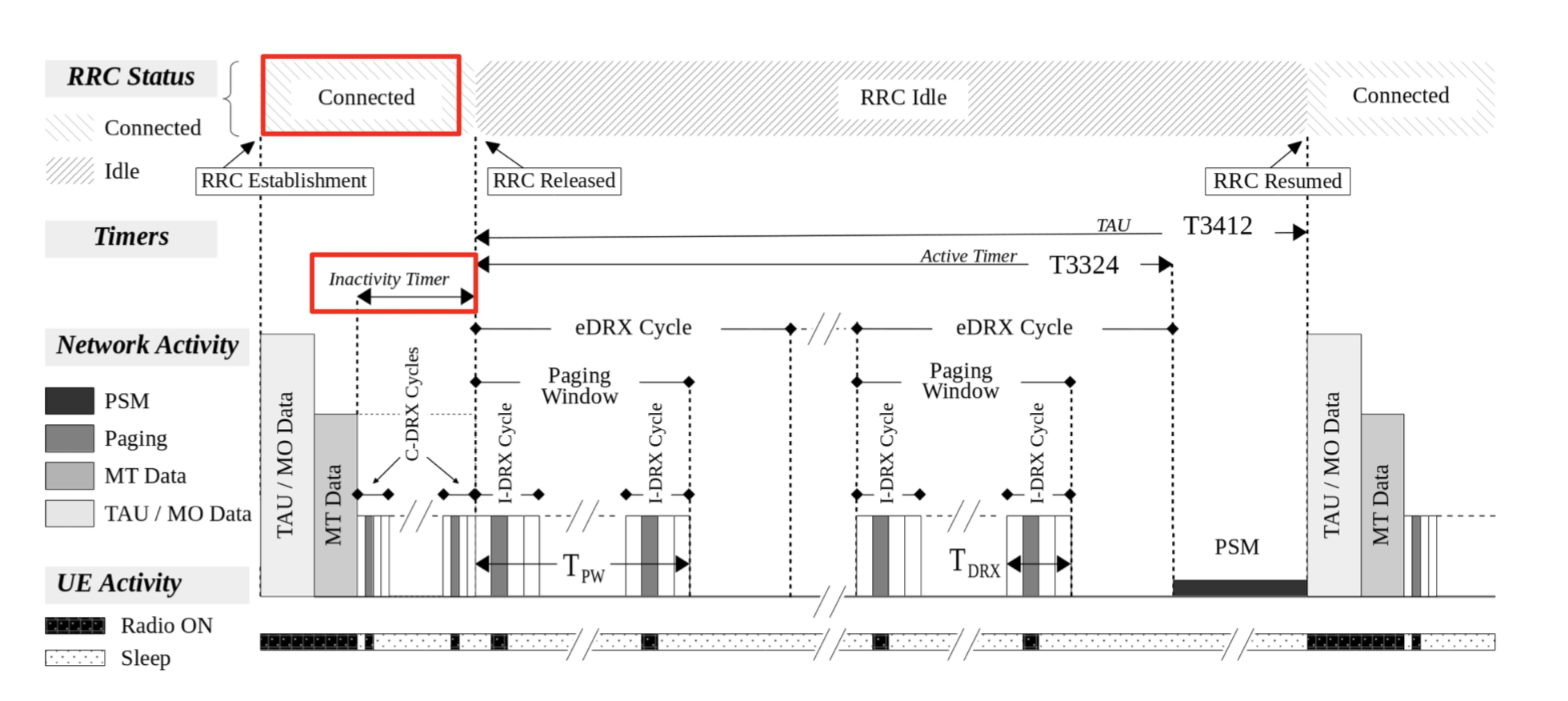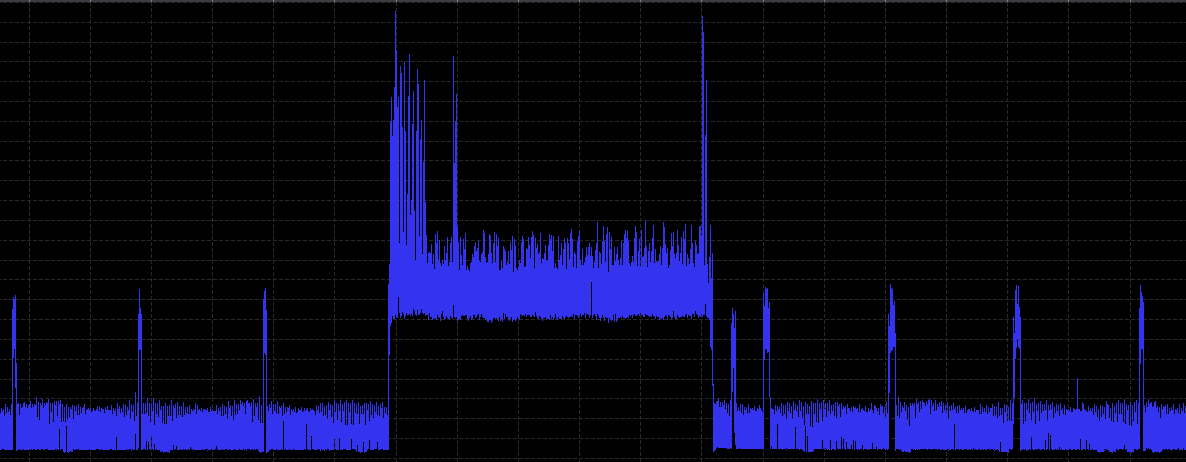Alessandro Parmigiani
@Alessandro Parmigiani
Best posts made by Alessandro Parmigiani
-
RE: RRC inactivity timer duration for NB-IoT and LTE-Mposted in Network & Coverage

Is the inactivity timer always containing C-DRX cycles like in the picture?
Below you can find a wider view of a very similar scenario within my power analysis:

From here you can see the DRX cycles after the connection mode. This is why I’m thinking that the inactivity timer is contained between the actual data transmission (spikes on the right) and the beginning of the DRX cycles
Thank you in advance.
Latest posts made by Alessandro Parmigiani
-
RE: RRC inactivity timer duration for NB-IoT and LTE-Mposted in Network & Coverage
@Stefan-de-Lange Sorry for the late answer. I have been trying with the URC logs and they confirm my suspects. Data are sent just at the beginning of the connected mode. Then a RRC inactivity timer of about 5 seconds follows. Do you know why providers are choosing in favor of longer or shorter DRX inactivity timer as well as an inactivity timer with DRX cycles?
-
RE: RRC inactivity timer duration for NB-IoT and LTE-Mposted in Network & Coverage

Is the inactivity timer always containing C-DRX cycles like in the picture?
Below you can find a wider view of a very similar scenario within my power analysis:

From here you can see the DRX cycles after the connection mode. This is why I’m thinking that the inactivity timer is contained between the actual data transmission (spikes on the right) and the beginning of the DRX cycles
Thank you in advance.
-
RE: RRC inactivity timer duration for NB-IoT and LTE-Mposted in Network & Coverage
Hi @Stefan-de-Lange and @Ronan-Lacroix,
Thank you very much for your answers. I have been reading about the Release Assistance Indication (RAI) and it looked exactly like what I was looking for. Unfortunately, as you mentioned it just exists for NB-IoT and I am not sure it is supported on the BG 96. At the moment I’m testing LTE-M in Slovakia and I have some questions for you both:

The spikes on the left are a data transfer. At the very right end the two major peaks relates to the RRC idle mode trigger I guess. In the middle an approximately 5s long RRC inactive period.-
From your experience, is the RRC inactivation time related to the number of LTE frames, in this case 5 s ~ 5.12 s, therefore 512 frames or can it also be uncorrelated?
-
Is the RRC inactivation time ending where the spikes on the right begin? Or is the transition to idle mode also included?
Thank you in advance

-
-
RRC inactivity timer duration for NB-IoT and LTE-Mposted in Network & Coverage
Hello everyone,
Is there any precise information about the RRC inactivity timer duration at least for NB-IoT and LTE-M by Telekom in Germany?
I am currently measuring power consumption using LwM2M and MQTT over cIoT. Analyzing the results I found out the existence of the RRC inactivation timer that keeps the connected mode for various seconds even after the last packet is sent/received. I have therefore the following additional questions:
- Is the RRC inactivation time always constant for a specific carrier in a specific network?
- Is the RRC inactivation time generally different between NB-IoT and LTE-M?
- Is the RRC inactivation time normally variating choosing different eNodeBs?
- Is it generally possible to visualize the RRC inactivation timer duration from a modem (i.e. Quectel BG96)?
- Could the RRC inactivation be set by the device or is it just controllable by the operator of the eNodeB?
Thank you in advance.

